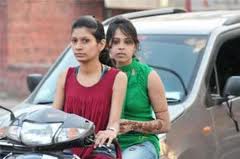
Bijlipur (Punjab), April 23: For some time now, the village of Bijlipur has been attracting a slew of local news TV crews and even reporters from Canadian radio stations. The village has something that most of Punjab can't boast of: a sex ratio in favour of women.
The state of Punjab, along with Haryana, is among the country's worst performers when it comes to sex ratio. Census 2011 figures record 893 females per 1000 males for Punjab. Between 2002 and 2008, the local administration of Bijlipur reported a sex ratio of 1,800 females to 1,000 males.
While the exactness of the figure may be contested, other indicators such as birth and death figures from the local aanganwadi confirm that girls enjoy a healthy sex ratio in the village compared to the rest of the state.
From 2005 to 2010, the village saw the birth of 22 girls against 13 boys. The year 2011 was the only year since 2002 that saw the birth of more boys (five) than girls (two).
In 2006-07, no boys were born while Bijlipur added seven baby girls to its tally. Meanwhile, Ludhiana, an hour's drive away from this village, recorded a child sex ratio of 869 girls per 1,000 boys in 2011.
Sociologist Dr H S Bhatti of Punjab University, Patiala, surveyed the village with a team of students in 2009. The survey results showed, among other things, that girls made up more than 50% of the student body in schools. The trend of having a string of girls until the birth of a baby boy, prevalent even in Indian cities, seems absent here.
In Bijlipur, it is common for families to have just two daughters. Jaspal Singh, 57, has four daughters. While two of them work in the city and live away from home, the other two are still in college.
He often includes a message about the girl child when reading outside Bijlipur. "I normally ask the hosts if they are okay with me putting in a bit about this issue. I have never been refused," says Singh. Surinder Kaur, 28, who runs the village aanganwadi, points to the factors that she feels have led to such encouraging figures. "People are better educated here, most have college degrees. There is a strict ban on tobacco and drugs. More importantly, killing girls is considered a sin," she says. Charanjeet Singh, the 55-year-old headman of the village remembers how when he was a child the village stood out in its treatment of women. "Educating women in the family was not common in neighbouring villages when I was young. But our village has been doing that ever since I can remember. All five of my sisters studied up to college and have retired from their jobs now," he says.
Jagjot Pal Kaur, a hotel management professional who travels to Ludhiana for work, says that lack of facilities has done little to deter women to go out and get what they want. However, it is not all about giving cushioned comforts to the females. It's a two-way street. "While they were in college, our older daughters would come back from their exams and help us in the fields too," says Singh.
That the current state of affairs is limited by geography is only too clear to Bijlipur girls.





Comments
Add new comment